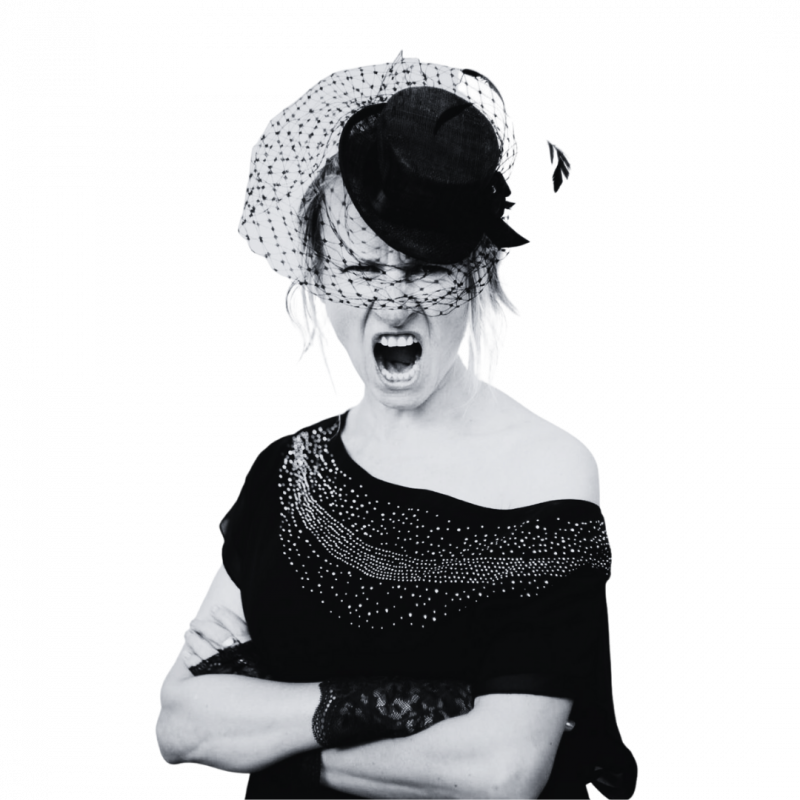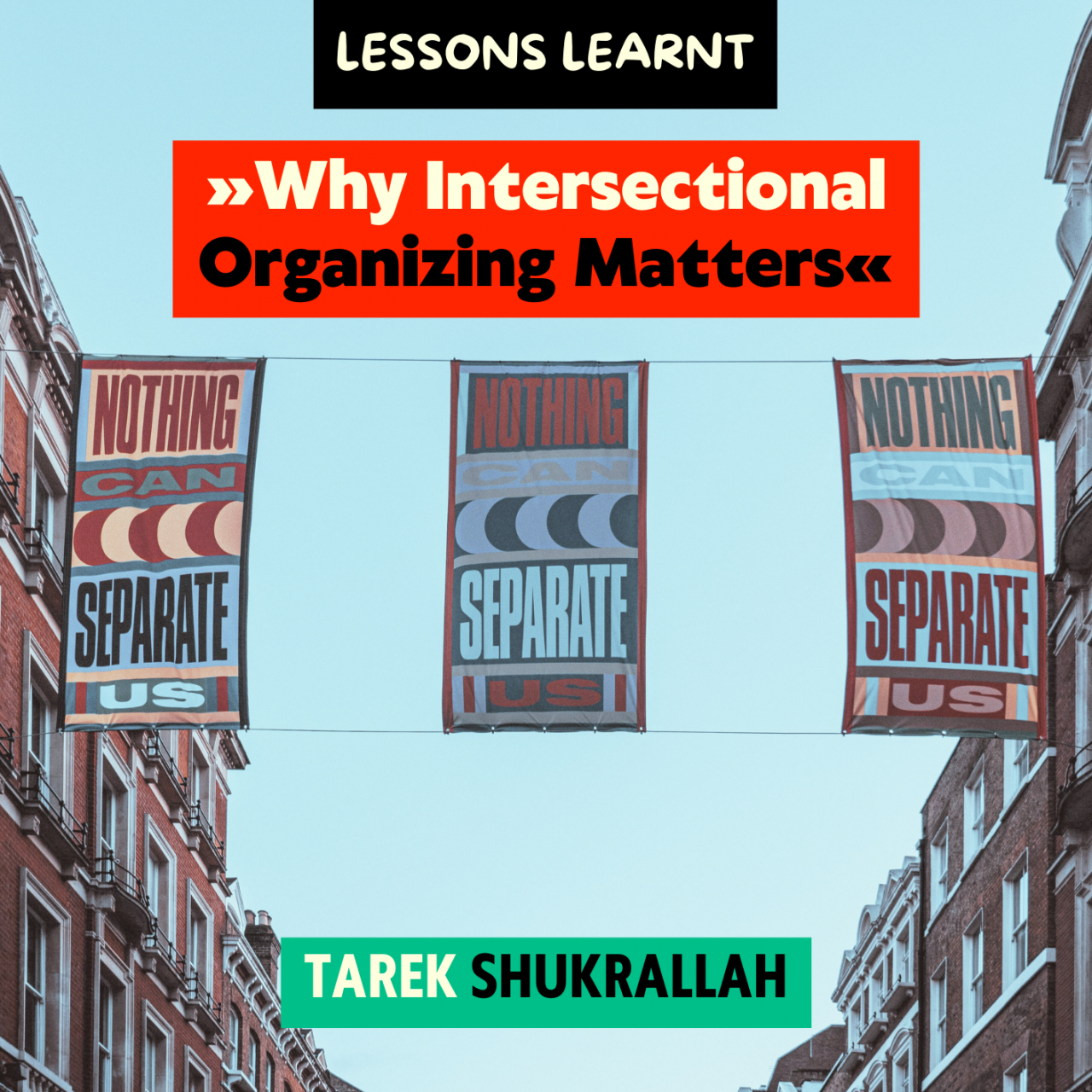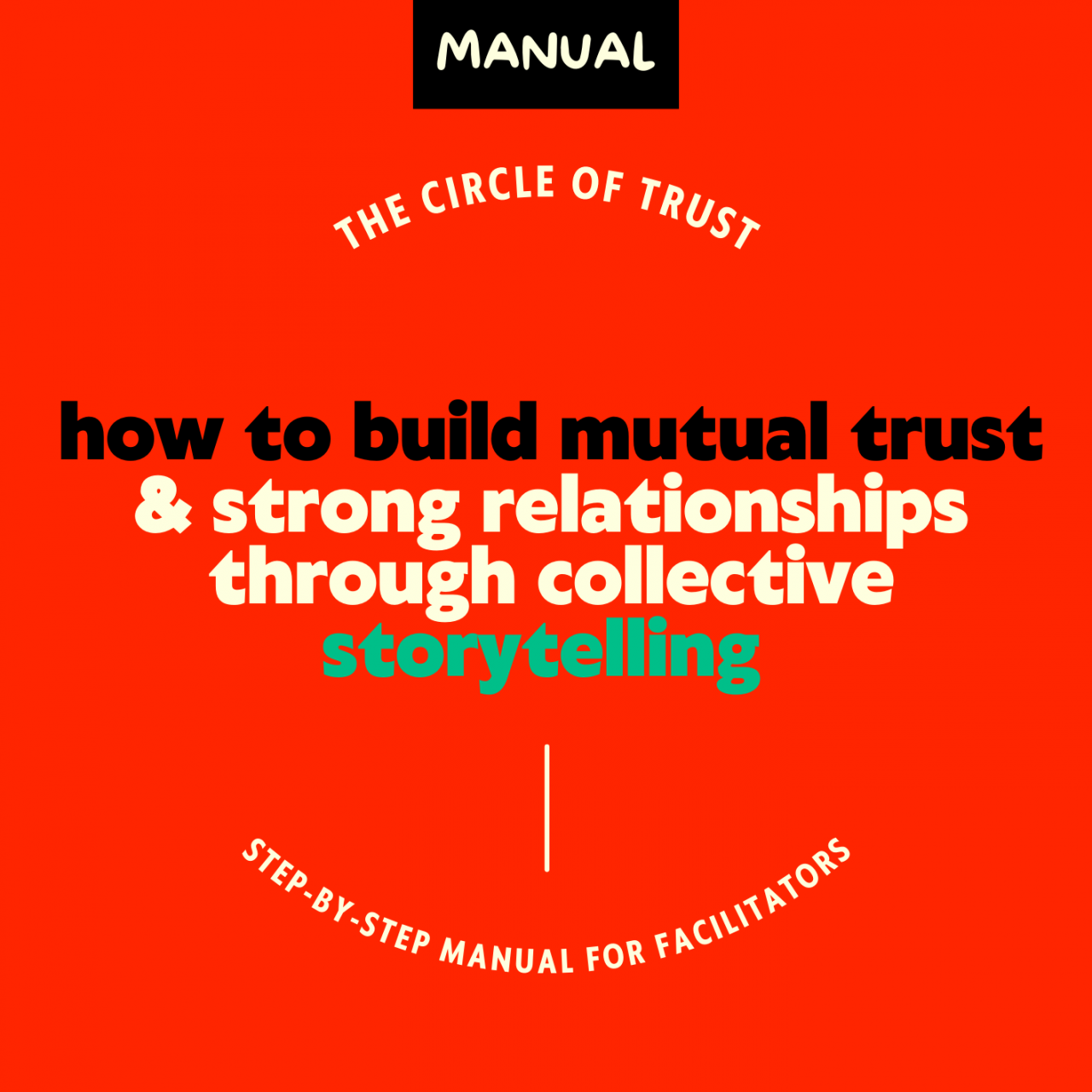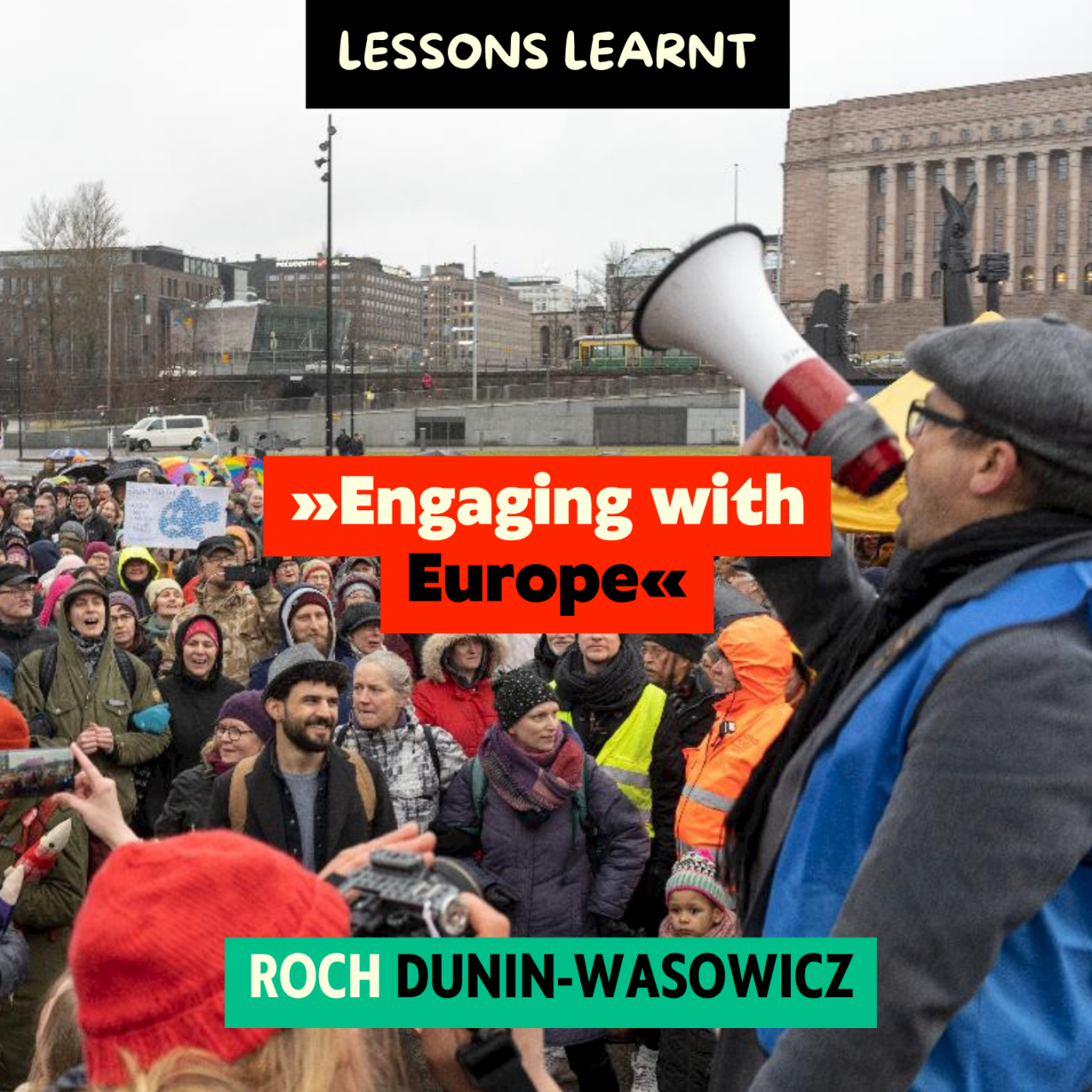Artivism, as the intersection between activism and art is nowadays called, can be one of the most powerful tools of political action. Political art serves its purpose when used at protests and demonstrations, but it can obviously also be used as propaganda by, with and for authoritarian regimes. Art created by, with and for the people – as I believe it is the conscience of humanity – is an important physical and metaphysical medium of ideas and thoughts, but also experiences and emotions, therefore it can help the cause we all fight for.
Each protest is different, depending on the issue at stake, the local context and the moment in history, however, there are simple methods and processes to help you create an artistic protest action so we do not have to just rely on talking heads at our demonstrations.
Art as a Peaceful Weapon Against Authoritarianism
As an artist and activist, I have always been engaged politically making art dealing with contemporary social, political, cultural, and especially gender- and religion-related issues. No wonder, when the conservative right-wing party PiS (Law and Justice) came to power in Poland in 2015, I went to the streets, like thousands of other concerned people in Poland and abroad. No wonder, I started to use my artistic skills in organising protests and actions in Berlin where I live.
As a founder and member of the Polish feminist collective Dziewuchy Berlin, I have co-organised many protests in Berlin, which touched upon subjects of women’s rights, access to abortion, and democracy. For most of them, I developed concepts and performative scripts, as well as visual identities with illustrated flyers and posters, so that artistic elements in protests became my own genre of art – with a theory behind it and a methodology, which I often exhibit in galleries and other art spaces.

I see demonstrations as spectacles, as what I call ‘instant theatre’ – theatrical political performances dealing with issues we are touched by as societies, communities, and individual beings: with ‘actors’ (speakers, musicians, performers), a ‘stage’ and scenography, a ‘dramaturgy’ and an ‘audience’ as the active spectators.
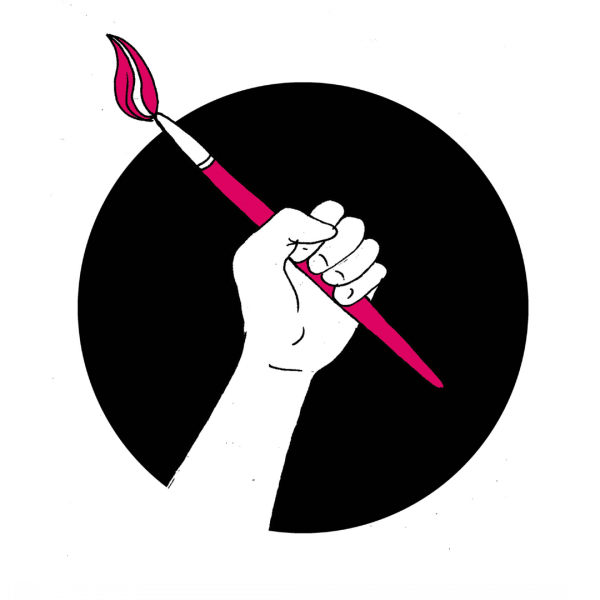
These kinds of artistic protest actions empower people. Many of them leave a visual and emotional mark in the collective memory of those who attended.
Here is a short step-by-step guide on how to create an artistic protest action. (Even if there’s different positions on this matter, please consider that for art projects (graphics, drawings, photos, songs, performances, videos), copyrights and intellectual property rights apply, as artworks are owned by an artist or an artist collective. If we fight for human rights or women’s rights, we should respect artists’ copyrights. Always give credits and refer to the original if you copy or remix.)
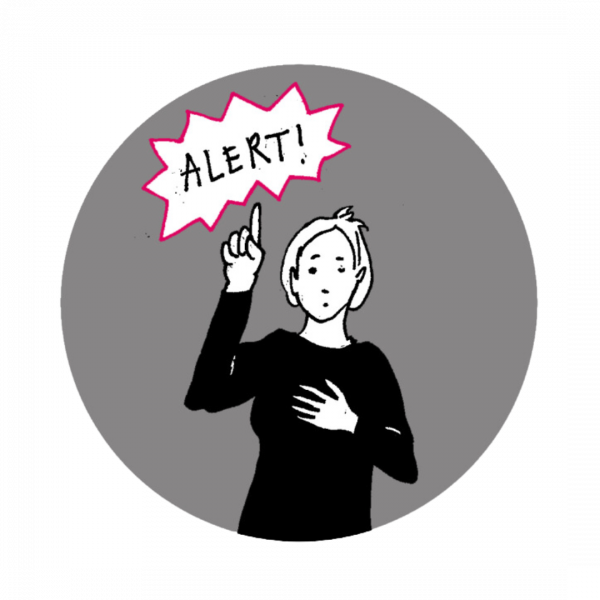
1. BANG! – What the internal or external reason to act/react is
Sometimes it is an urgent matter, an event that recently happened (i.e. Dorota, a pregnant woman, died due to no medical treatment and draconian anti-abortion laws) or a decision that needs to be immediately prevented from being put into law (i.e. the abortion ban in Poland in 2020). Sometimes there is even a fixed annual date (i.e. International Women’s Day) for a protest, which allows long-term planning in advance.
For spontaneous actions you need to prepare differently — take a day or at least some hours, as it will definitely be 'wild' and it is definitely better to be well prepared for the 'wildfire' to come. Often when something terrible happens and you have to react quickly, there are a lot of strong emotions you and your fellow activists feel – the same obviously counts for the general public. These shared emotions can help to gather like-minded people and enlarge your group and your community of active supporters. You probably can even get more press, as media tend to react in an instant mode, too.
From my experience there are more people willing to act when things are dramatically urgent. For long-term planned events there is usually less 'fire', less instant emotions, so this requires a different flow of planning — you need a lot of skills, time, energy, and sometimes even money to keep everyone interested.
TIP: Be aware of the different levels of engagement and commitment for instant and long-term artistic protest actions.
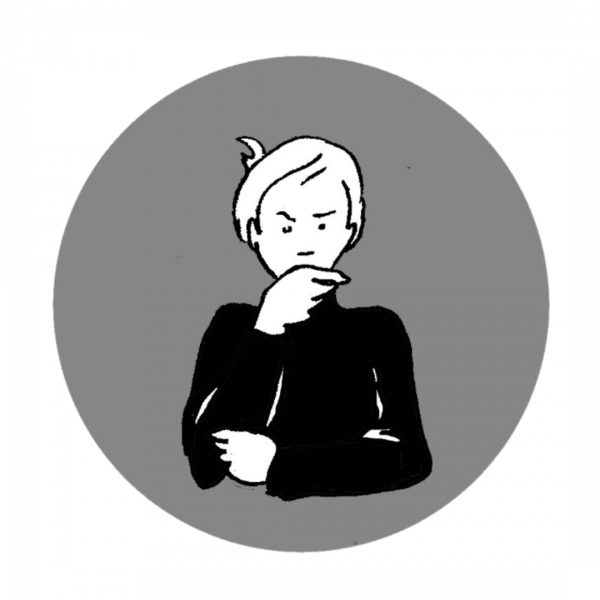
2. ANALYSE! - What the issues at stake, the social, political and cultural causes, and what our demands are
What is the problem and what is your position? Try to have a clear view on what you want to say, as messaging is key. It is usually easier for ‘instant’ events, as you react to something that already happened. One usually says ‘I do not agree’ with this or that (for example: „Against the abortion ban!”). For long-term planned events you have to analyse more generally but also direct (for example: „Let’s show our power on March 8th!”).
Most often protests are ‘against’ something, sometimes they are ‘for’. Being against is, however, not enough if we want to win over big social majorities. As my late boss, wind energy pioneer Preben Maegaard, once put it: ‘You can protest against something, but that is not enough. You have to offer an alternative!’ This is how he and other dedicated people in the 1970s in northern Denmark have developed wind turbines as we know them today. What is our alternative? What is our demand and how do we imagine change to be possible? And, last but not least, what is our vision? Art can help not only to express our disagreement, but can also let us imagine an alternative to the status quo.
For protests planned on a long term, it might happen that there will be more and more issues to cover, so that you lose the initial idea and message. Try to take a step back, keep the main message general and broad, so that more people can identify with your cause. Try to give space to people who agree with the main message, but have different approaches to special issues and specific demands. You need allies to make your protest meaningful to as many people as possible.
TIP: Be as clear as possible in your messaging, so that many people can understand what you fight against and what you propose as an alternative.

3. RESEARCH! – What knowledge, context, and insights we miss
It usually helps to research some knowledge and context of the action (date, location, issues, etc.). As simple as that — read about the issue, ask people who are affected, find out if there are any connected themes to broaden the issue you want to talk about to raise the interest of people not directly involved in your struggle. Sometimes even initially unrelated issues can be combined and contribute to the development of a new narrative.
TIP: Get data, get numbers, get facts! This can deepen your political analysis and inspire your artistic protest!
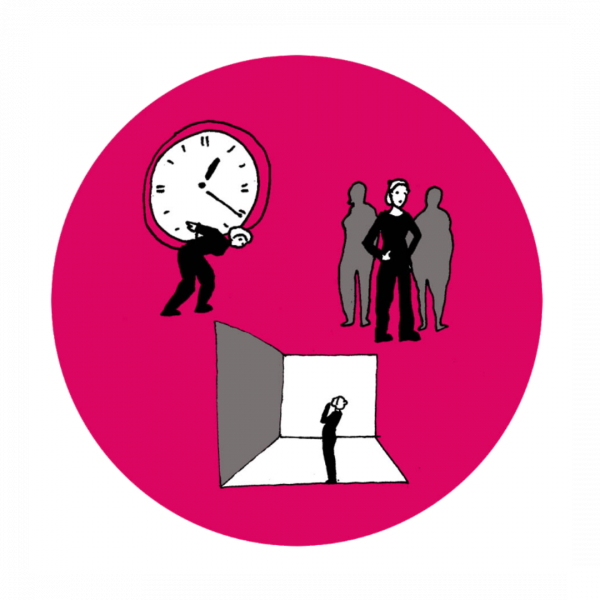
4. PLAN! – What the date and time, the location, the audience of your artistic protest action are
Imagine a protest as a theatre spectacle with a stage (street or square), a scenography (surrounding buildings, banners, symbols), performers (activists and speakers) and an active audience (people who come to the protest or people passing by), a script (protest schedule) and a dramaturgy (from the beginning to the end which messages and emotions do you want people to go home with?). Each theme, each date, time and location is different and offers genius loci, which can be an inspiration.
There are situations when we can choose the date, time and location as well as the audience of the action, but not always.
Location: Protests are sometimes organised at a specific site and date (special dates, anniversaries, visits of politicians, etc.) and we do not always have much influence on that. Then you have to adjust your idea and resources to that specific situation. For example, when a politician comes and visits your city at noon, you can imagine there will not be many people joining you. Consider that and come up with an artistic idea and a plan that does not require a lot of people but is still visible, like one big poster or a sign.
If you can choose the location, consider the symbolic meaning of it, for example in front of an embassy or a public office, at a specific square or a street in case you want to march. Whenever you can, choose a location that offers a good background for powerful photos which you can later use to illustrate related issues. Avoid shattered shadows as they make it hard to take clear photos. Try to organise protests at less remote locations.
Dates and time: Obviously it is easier to organise a protest at hours after work. Consider seasons and sunlight — in winter it is already dark after 6PM in Berlin — then you will need lights (candles, mobile phones, lamps) that can create a unique spatial situation. Create some magic and act on the senses.
Audience: Consider the desired audience and plan a date, time and location so that there will be as many people joining the protest as possible. If that is not possible, adjust your idea to a strong visual symbol that stands alone. Also, you should consider your audience as an integral part of the protest, engaging people not only for common shouts, applause or other reactions, but also for taking an active part in the artistic protest action.
Resources: You need to carefully assess your strengths and weaknesses and be aware of what organisational, human and logistical resources you have. Each time you will have a different number of people willing to organise a protest. So do not plan a big performance with a choir, if it is only a few of you who organise it. It may happen that you find participants for your choir from the audience, that would be lovely. But be prepared for everything and have a plan B. Also, some of your fellow organizers may not like to be on stage and perform, that is normal.
TIP: If you want to engage activists and/or your audience in a performance, keep their ‘roles’ as simple as possible so that people do not get stage fright.
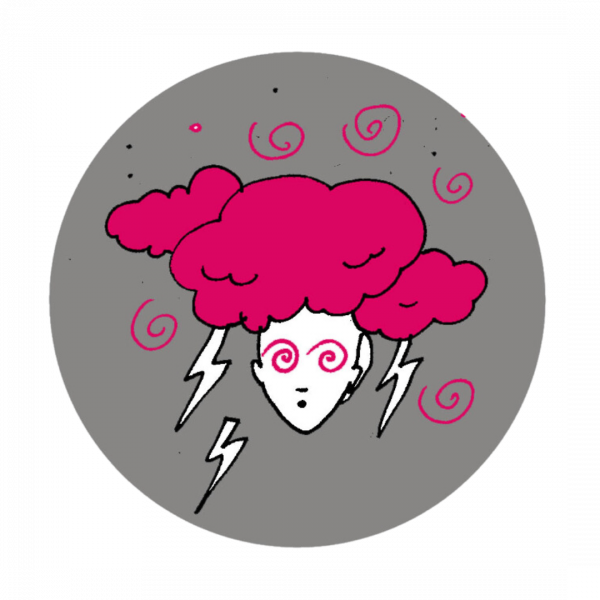
5. BRAINSTORM! – How to be politically creative in a minute, a night (sleep over it) or several months
All the information, context and resources are now in a melting pot. Brainstorming works well with like-minded people, for example other activists from your collective. If no one has time, sleep over it and come up with an idea in the morning.
Consider what story you want to tell. Become a storyteller! Consider the the protagonists, the issue and the conflict, the meaning of it, the location and the date and time as well as human resources, the message and the call to action you want to address your audience with. Consider also various forms of art: painting (transparents and banners), literature (poetry, slogans, hashtags), theatre (performative actions), music (live or recorded), etc. Which artistic tools, means and forms are useful to bring your story to life?
TIP: Be as creative as you can be, set your mind free!
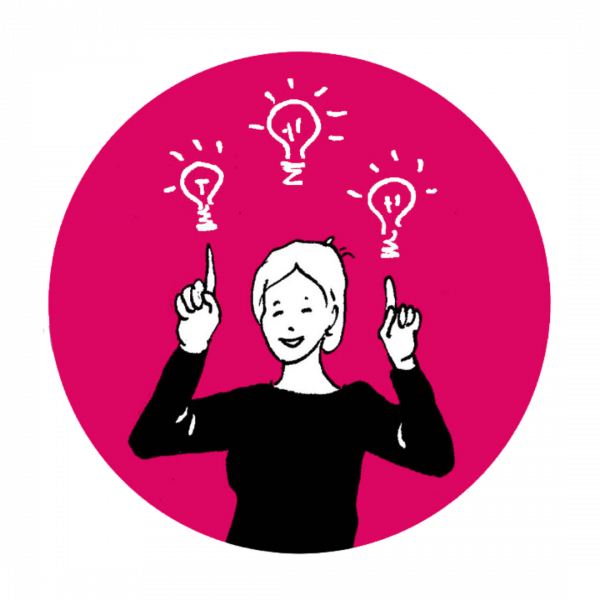
6. CREATE! – How to make your artistic idea become reality
If you are an artist, you know what to do. If you have less experience, invite an artist or be creative yourself. I like to mix poetry with visual arts and performance or music at protests, like in my 'regular' art exhibited in galleries. I basically do the same on the streets. But everybody is different, find your way and enjoy! Just don’t be afraid to use different forms of art together.
Symbols: Each protest can have a different visual identity, depending on the theme. You can, however, stick to your own style. Graphics should be simple and strong, poster-like. You can follow contemporary trends when it comes to colors, symbols and font styles.
Banners: Alone or in a group, you can put your slogans on banners, which can be made of anything, actually. From paper and cardboard to textiles or clothes, remembering that 'the medium is the message', too.
Performance: Depending how many people you have, plan something simple but visually strong. Music can be a crucial part – either live or recorded. Draft a plan, a storyboard, or a script which you will share with your „performers”. In my case, as we usually have no time for rehearsals, I draw storyboards a few hours before. I do not write, as nobody would have time to read it an hour before. It is easier for everybody to remember their role when they see it on a drawing. Depending on the situation and theme, you can choose what works best.
TIP: Make it simple and powerful!
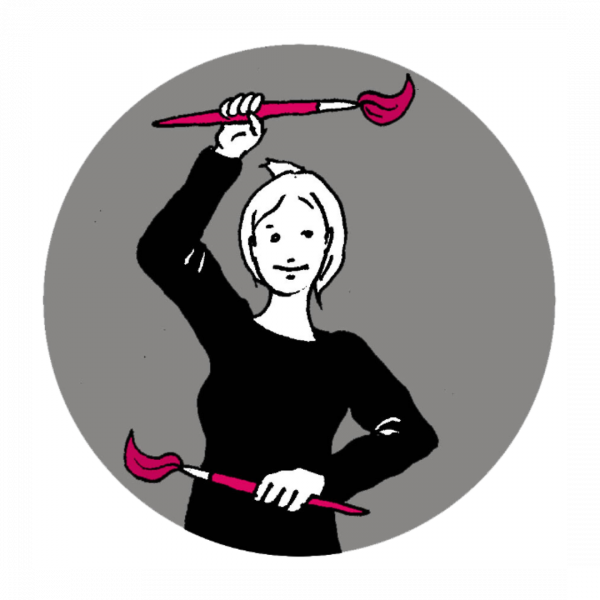
7. BOOM! – How to get your creative tools and your political passion together
As citizens, we do not only have a right to speak, but to be creative. This is when art can be a helpful source for our collective actions. Call as many people as possible to join you, bring their passion, and enjoy the power you create together.
TIP: People have the power, so make the people participate!
Let me finish with three case study examples of artivist protests by Dziewuchy Berlin.
Case Study 1: Black Protest (03.10.2016, Berlin)
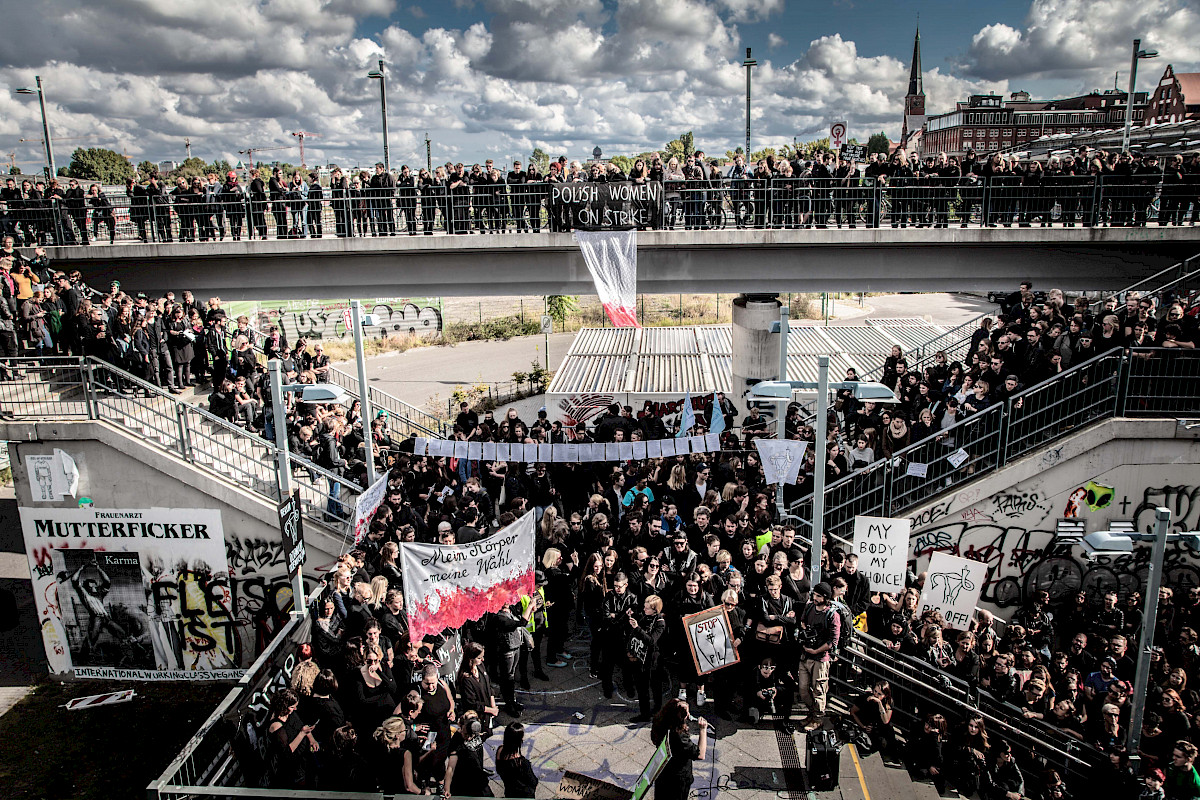
Black Protest by Dziewuchy Berlin at Warschauer Brücke (Photo: Oliver Feldhaus)
- Theme: Black Protest / Polish Women’s Strike
- Political Issue: After the Polish government announced they want to ban abortion, a huge civil movement was created in Poland and abroad - the Dziewuchy. I have founded the Berlin chapter on April 2nd, 2016. In September 2016, the energy and the widespread anger cumulated in a strike of women* in Poland and massive demonstrations under the slogan „Black Protest”. Also in Berlin, we felt this anger, it was an emotional critical mass that crossed our boundaries and we had to do something.
- Date: 3 October 2016 - the date was chosen by organisers in Poland for a massive women’s strike. It was Monday, in Berlin a day off and a public holiday, so we could organise it during the day. A genuine strike was of course not possible and would have been pointless.
- Location: First, we planned the demonstration on Warschauer Brücke, but when after a week we saw that there were about 2.000 people interested, we had to move the protest somewhere else. Since I live nearby, I remembered the stairs between the S-Bahn and the U-Bahn station. The spatial construction of these stairs whispered to my inner ear that they are actually a stage.
- Human Resources: 3 organisers
- Time Resources: 1 week of planning
- Artistic Idea: The Black Protest was a viral action under the hashtag #BlackProtest developed by the left party RAZEM in Poland. It became very popular in Poland and abroad. All protests were organised under the same theme. The location inspired me to an artistic idea that protests are spectacles. We were directors (organisers), performers (speakers and musicians), we had the theatrical stage (stairs), the scenography (audience all dressed in black) and the script (program that consisted of speeches and live music, which ended on a positive empowering note). The only colour was my red and white (like Polish flag) banner I made of a lace curtain, which later became my artistic trademark.
Case Study 2: Global Scream (08.03.2019, Berlin/Worldwide)
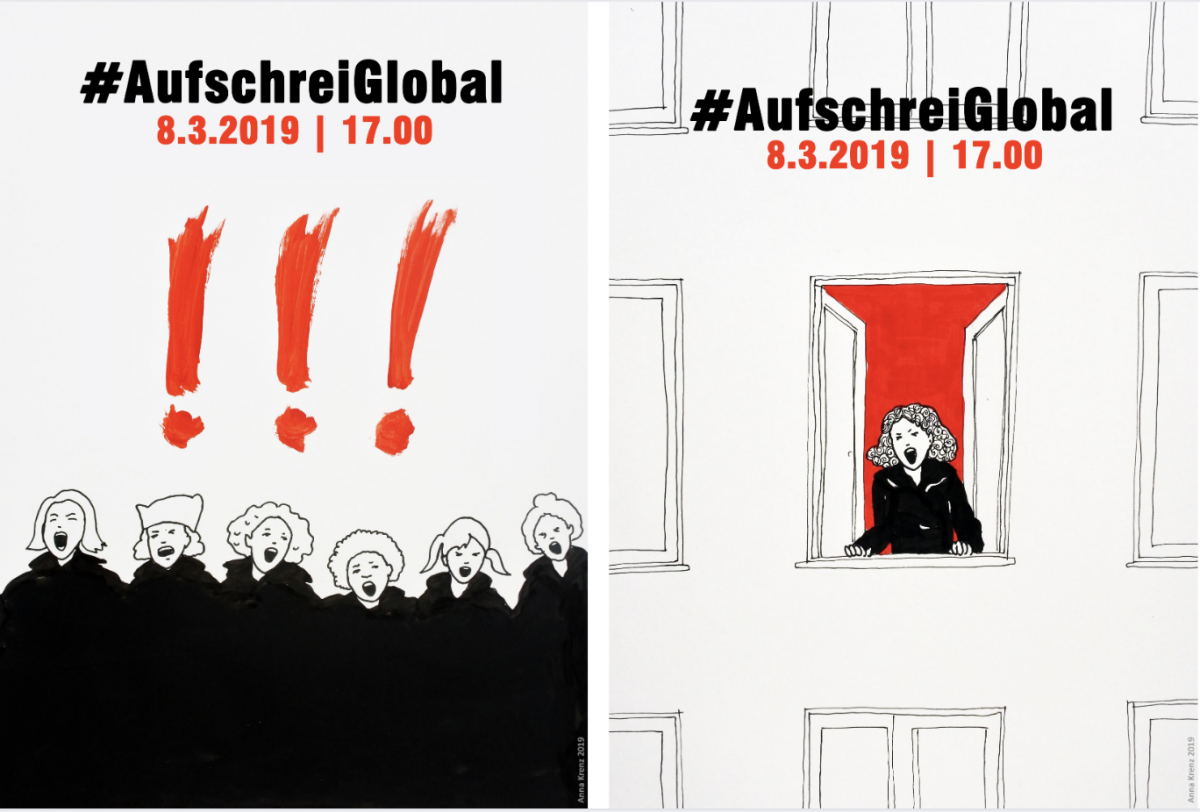
Call to Action Posters for the Global Scream Action in Germany (Concept & Graphic: Anna Krenz)
- Theme: Global Scream
- Political Issue: Berlin is a city still divided. Every year for Women’s Day there are several marches (more every year), which unfortunately take different routes, due to ideological differences. In 2017, almost a miracle happened – we managed to unify both massive marches of the Alliance of Internationalist Feminists and Frauen*kampftag to come together for the 8th of March and meet in one place – at our Polish protest at Oranienplatz. Two years later it was not possible anymore. We thought it would be good to at least once a year show the world, that we, women*, can actually stand together even if we have different opinions and backgrounds. As in 2019 a new initiative was created - the Frauen*streik – we were part of it from the start. During the preparatory meeting of Frauen*streik in February 2019 about 200 people from all over Germany met in Berlin to discuss plans for the 8th of March international women’s strike. It did not make sense to organise a third march, it was difficult to decide which march we should join collectively, and on top of that - the Senate of Berlin gave us a present for Women's Day - a day off. So there was no point in organising a strike, too. I remember I was already in my coat, on the way to the meeting, when I thought ‘Ok, I have an idea, but I guess I will have to draw it.’ So did I. I had the idea of how to unify us all on the 8th of March. My idea was luckily voted for and organised by Frauen*streik in all Germany.
- Date: 8 March 2019, 17.00-17.01
- Location: Berlin, 2 different locations; worldwide various locations, same time: 5 PM.
- Human Resources: 1 person’s idea, 2 persons from Dziewuchy Berlin conducted the action in Berlin, organisation and mobilisation in other cities: many activists from Frauen*streik Germany.
- Time Resources: Protest planned 6 months before, but the action was developed on 17.02.2019
- Artistic Idea: Global Scream, in German #AufschreiGlobal (with a reference to Anne Wizorek’s hashtag #Aufschrei, a prototype of the #MeToo campaign in Germany), is a one minute-long scream. We all have our own reasons, it does not matter what language we speak, what religion we have, what gender we are. We can all scream. Each of our voices adds to a massive scream of women* of the world. In Berlin alone, 25.000 people on both marches were screaming at 17:00, in two different locations though. Since then, we conduct #GlobalScream every year in Berlin on March 8th, but also on other dates.
I made two special posters for the action. Shockingly, later the action was misappropriated and taken by a Belarussian activist from Warsaw, who claimed it was her own. Again, in artivism intellectual property should be respected.
Case Study 3: Safe Abortion Day (28.09.2020, Berlin)
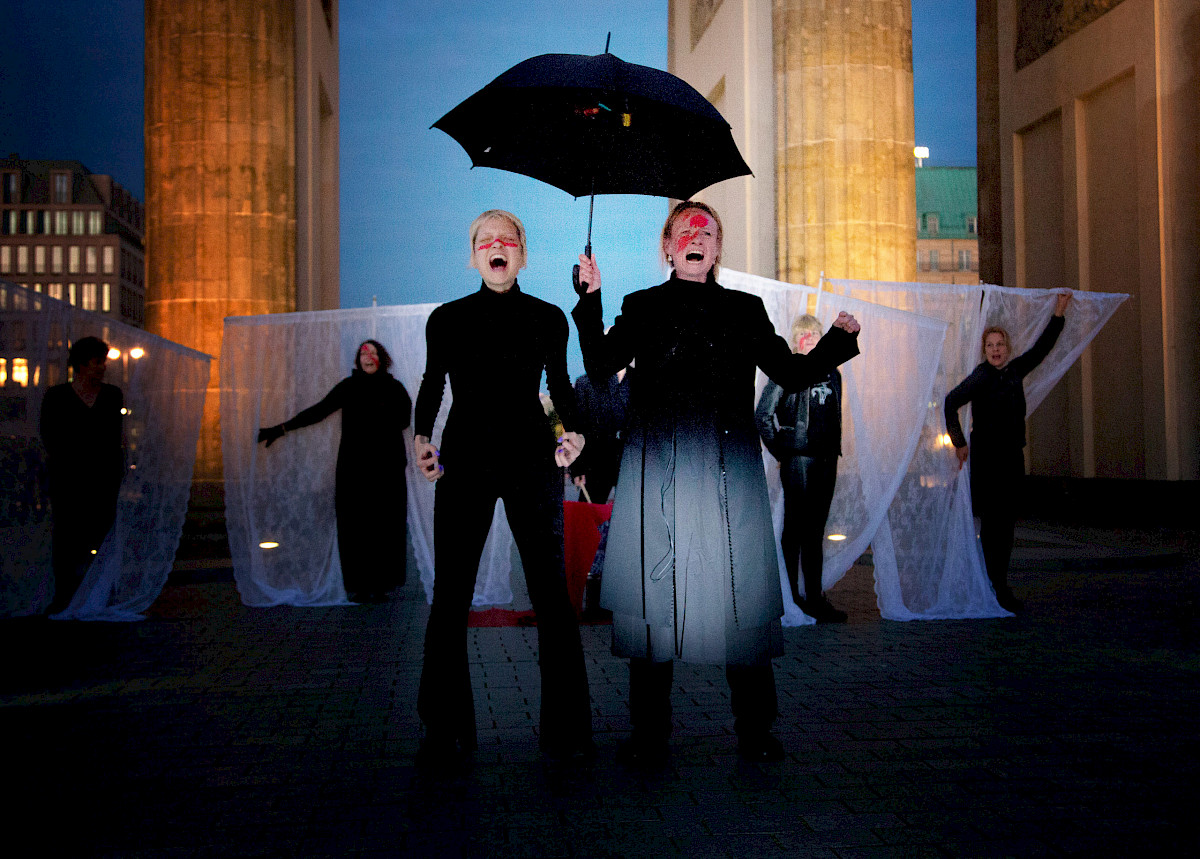
Anna Krenz & Dziewuchy Berlin at the 'Global Scream' in front of Brandenburger Tor (Photo: Oliver Feldhaus)
- Theme: VOICES / Safe Abortion Day
- Political Issue: On the occasion of the International Safe Abortion Day people demonstrate for women’s reproductive rights worldwide. In Berlin, we have organised a demonstration a year before. This time, I wanted something different from a classic talking heads demonstration, as this date was still not popular in Berlin. Also, Poland has already begun to talk about further attempts to limit the right to abortion, a right that was already draconian at the time.
- Date: 28.09.2020 (International Safe Abortion Day)
- Location: Brandenburger Tor – as it was a regular day, we had to organise the protest in the late afternoon (6 PM) for people to be able to come from work. We wanted to have a powerful background - a symbolic city landmark.
- Human Resources: 8 organisers from Dziewuchy Berlin, 1 random person from the audience taking part in the performance.
- Time Resources: Planned in 2 days
- Artistic Idea: Due to time limitations, the performance was a simple story about the drama of women* who suffer in Poland under the dramatic anti-abortion law, about sisterhood and about our feminist power. As one activist in our group said, she was also a dancer, she performed a contemporary dance. One of our activists is a musician and joined in with drums. So, we read three different stories of persons from Poland about their experiences, we conducted the ‘Global Scream’ and, in the end, we invited the audience to join for the powerful ending of the performance.
For many years, I have been working with textiles, especially with lace curtains. When I started political activism on the streets, I thought why not use the same materials, objects, and tools? I have made many lace banners for demonstrations about women’s rights, as lace curtains are a very feminine material. It covers what is private but one can see the world through it differently. It is also a „passive” material – it simply hangs in the window in the privacy of a home. On the streets, however, the same material becomes part of the public space, creating walls and becoming a superstructure. I also revived an installation I made for the project „Polish Wife” (2004) making it a pop-up art protest space – the Embassy of Polish Women (Botschaft der Polinnen*). The walls of the embassy served as the stage scenography for the performance.
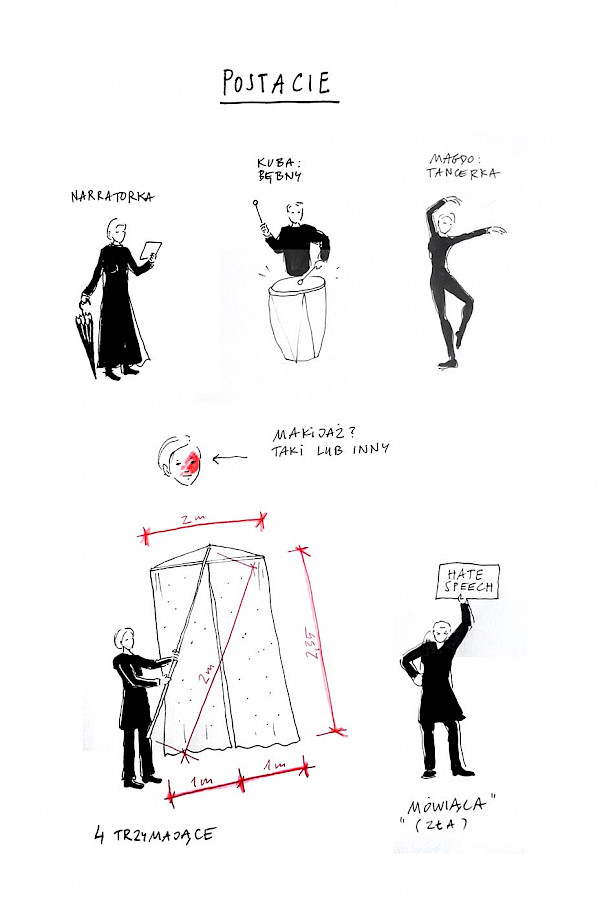
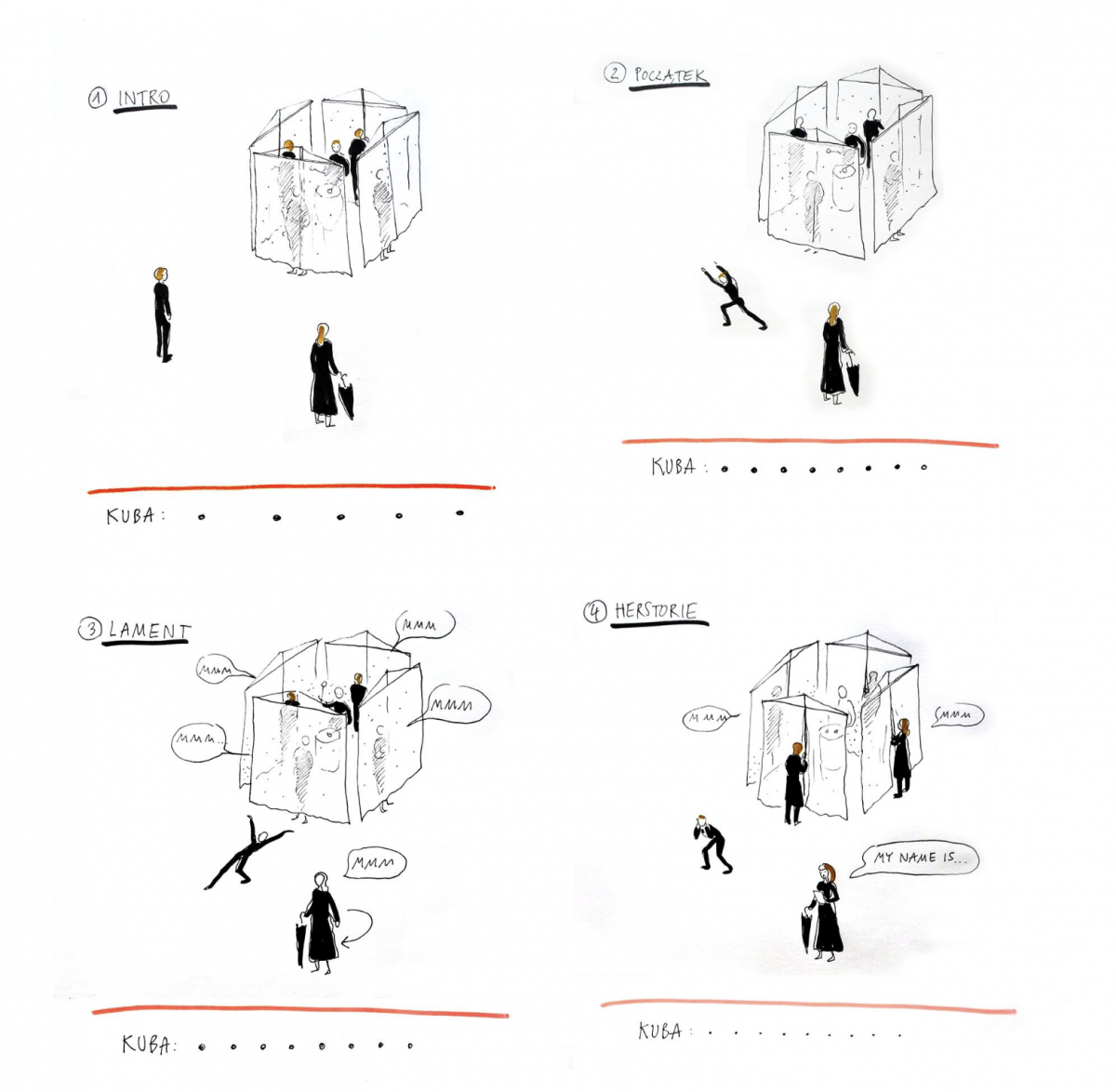
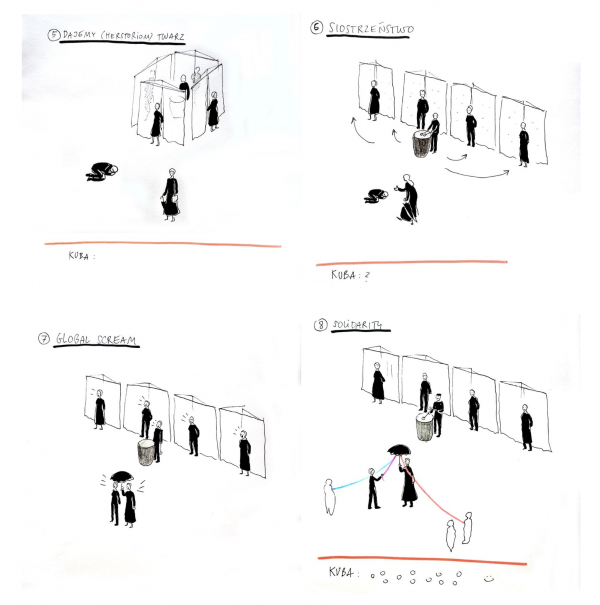
Concept and Storyboard Drawings for 'VOICES' by Anna Krenz and Dziewuchy Berlin (Graphics: Anna Krenz)
